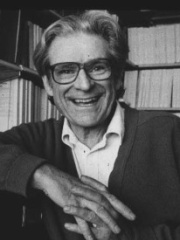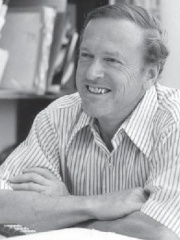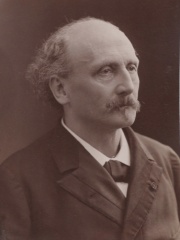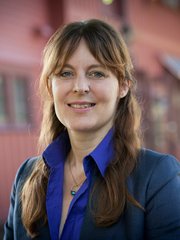



The Most Famous
ASTRONOMERS from Austria
This page contains a list of the greatest Austrian Astronomers. The pantheon dataset contains 644 Astronomers, 4 of which were born in Austria. This makes Austria the birth place of the 25th most number of Astronomers behind Finland, and Greece.
Top 4
The following people are considered by Pantheon to be the most legendary Austrian Astronomers of all time. This list of famous Austrian Astronomers is sorted by HPI (Historical Popularity Index), a metric that aggregates information on a biography's online popularity.

1. Edwin Ernest Salpeter (1924 - 2008)
With an HPI of 64.58, Edwin Ernest Salpeter is the most famous Austrian Astronomer. His biography has been translated into 23 different languages on wikipedia.
Edwin Ernest Salpeter (3 December 1924 – 26 November 2008,) was an Austrian–Australian–American astrophysicist.

2. Thomas Gold (1920 - 2004)
With an HPI of 62.43, Thomas Gold is the 2nd most famous Austrian Astronomer. His biography has been translated into 31 different languages.
Thomas Gold (May 22, 1920 – June 22, 2004) was an Austrian-born astrophysicist, who also held British and American citizenship. He was a professor of astronomy at Cornell University, a member of the U.S. National Academy of Sciences, and a Fellow of the Royal Society (London). Gold was one of three young Cambridge scientists who in 1948 proposed the now mostly abandoned "steady state" hypothesis of the universe. Gold's work crossed boundaries of academic and scientific disciplines, into biophysics, astronomy, aerospace engineering, and geophysics.

3. Maurice Loewy (1833 - 1907)
With an HPI of 58.92, Maurice Loewy is the 3rd most famous Austrian Astronomer. Her biography has been translated into 19 different languages.
Maurice (Moritz) Loewy (15 April 1833 – 15 October 1907) was a French astronomer. Loewy was born in Vienna. Loewy's Jewish parents moved to Vienna in 1841 to escape the antisemitism of their home town. Loewy became an assistant at the Vienna Observatory, working on celestial mechanics. However, the institutions of Austria-Hungary did not permit a Jew to advance to a senior position without renouncing his faith and embracing Catholicism. The director of the observatory Karl L. Littrow was a correspondent of Urbain Le Verrier, director of the Paris Observatory and he secured a position there for Loewy in 1860. After going to France, Loewy become a naturalised French citizen. He worked on the orbits of asteroids and comets and on the measurement of longitude, improving the accuracy of the Connaissance des Temps. He also worked on optics and the elimination of the aberration of light. He was elected a member of the Bureau des Longitudes in 1872 and of the Académie des Sciences in 1873. Loewy became director of the Paris Observatory in 1896, reorganising the institution and establishing a department of physical astronomy. He further spent a decade working with Pierre Puiseux on an atlas of the Moon composed of 10,000 photographs, L’Atlas photographique de la Lune (1910), the definitive basis for lunar geography for over half a century. The crater Loewy on the Moon is named after him and asteroid 253 Mathilde is believed to be named after his wife. He died in Paris at a government meeting of a sudden and unanticipated cardiac arrest.

4. Lisa Kaltenegger (b. 1977)
With an HPI of 40.04, Lisa Kaltenegger is the 4th most famous Austrian Astronomer. Her biography has been translated into 16 different languages.
Lisa Kaltenegger (born 4 March 1977) is an Austrian astronomer specialising in the modeling and characterization of exoplanets and the search for life. On 1 July 2014, she was appointed Associate Professor of Astronomy at Cornell University. Previously, she held a joint position at the Max Planck Institute for Astronomy in Heidelberg where she was the Emmy Noether Research Group Leader for the "Super-Earths and Life" group, and at the Center for Astrophysics | Harvard & Smithsonian in Cambridge, MA. She was appointed Lecturer in 2008 at Harvard University and 2011 at University of Heidelberg.
People
Pantheon has 4 people classified as Austrian astronomers born between 1833 and 1977. Of these 4, 1 (25.00%) of them are still alive today. The most famous living Austrian astronomers include Lisa Kaltenegger. The most famous deceased Austrian astronomers include Edwin Ernest Salpeter, Thomas Gold, and Maurice Loewy. As of April 2024, 1 new Austrian astronomers have been added to Pantheon including Lisa Kaltenegger.
Living Austrian Astronomers
Go to all RankingsDeceased Austrian Astronomers
Go to all RankingsEdwin Ernest Salpeter
1924 - 2008
HPI: 64.58
Thomas Gold
1920 - 2004
HPI: 62.43
Maurice Loewy
1833 - 1907
HPI: 58.92
Newly Added Austrian Astronomers (2025)
Go to all RankingsOverlapping Lives
Which Astronomers were alive at the same time? This visualization shows the lifespans of the 3 most globally memorable Astronomers since 1700.

